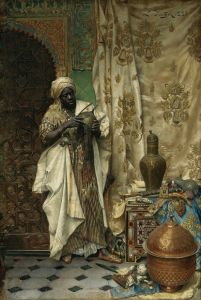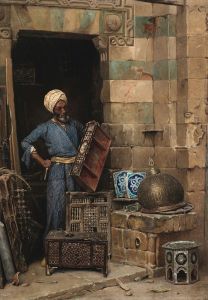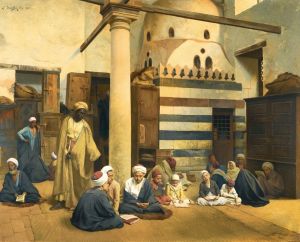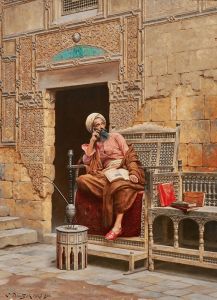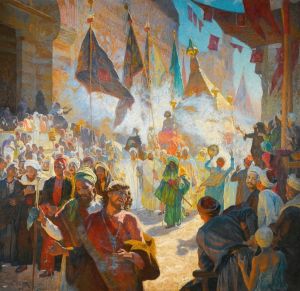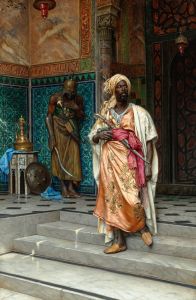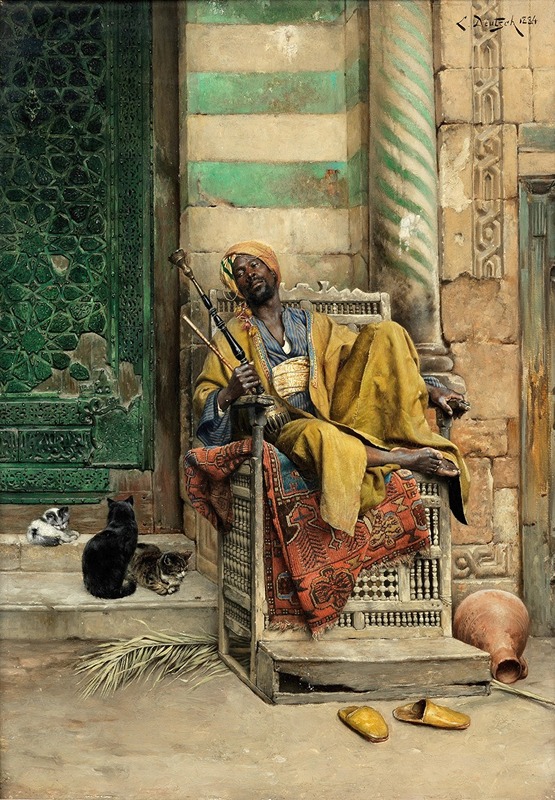
The Goza Smoker
A hand-painted replica of Ludwig Deutsch’s masterpiece The Goza Smoker, meticulously crafted by professional artists to capture the true essence of the original. Each piece is created with museum-quality canvas and rare mineral pigments, carefully painted by experienced artists with delicate brushstrokes and rich, layered colors to perfectly recreate the texture of the original artwork. Unlike machine-printed reproductions, this hand-painted version brings the painting to life, infused with the artist’s emotions and skill in every stroke. Whether for personal collection or home decoration, it instantly elevates the artistic atmosphere of any space.
Ludwig Deutsch was an Austrian painter known for his Orientalist works, which vividly depicted scenes from the Middle East and North Africa. Born in Vienna in 1855, Deutsch studied at the Academy of Fine Arts in Vienna before moving to Paris, where he spent most of his career. His works are characterized by meticulous attention to detail and vibrant colors, capturing the essence of the cultures and people he portrayed.
"The Goza Smoker" is one of Deutsch's notable paintings, created during a period when Orientalism was a popular genre among European artists. This movement was characterized by the depiction of Eastern cultures through a Western lens, often romanticizing and exoticizing the subjects. Deutsch, like many of his contemporaries, was fascinated by the architecture, costumes, and daily life of the regions he visited or studied.
In "The Goza Smoker," Deutsch presents a scene that is both intimate and detailed. The painting features a man engaged in the act of smoking a goza, a type of water pipe similar to a hookah. The goza is traditionally used in Middle Eastern cultures for smoking flavored tobacco. The subject is depicted in traditional attire, which Deutsch rendered with great precision, showcasing his skill in capturing textures and fabrics.
Deutsch's attention to detail is evident in the intricate patterns of the man's clothing, the ornate design of the goza, and the rich, warm colors that dominate the composition. The setting is likely an interior space, suggested by the presence of architectural elements and furnishings typical of the region. The use of light and shadow in the painting adds depth and realism, drawing the viewer's eye to the central figure and enhancing the overall atmosphere.
The painting reflects Deutsch's ability to convey a sense of tranquility and contemplation, as the smoker appears lost in thought, absorbed in the ritual of smoking. This focus on a solitary figure engaged in a moment of leisure is a common theme in Orientalist art, where artists often sought to capture the perceived exoticism and mystery of Eastern cultures.
Deutsch's work, including "The Goza Smoker," is part of a larger body of Orientalist art that has been both celebrated and critiqued. While admired for its technical skill and beauty, Orientalism has also been criticized for perpetuating stereotypes and presenting a romanticized view of Eastern societies. Despite these critiques, Deutsch's paintings remain significant for their artistic merit and as historical documents reflecting the cultural exchanges and perceptions of the time.
"The Goza Smoker" exemplifies Ludwig Deutsch's mastery of the Orientalist style and his dedication to capturing the intricate details of the world he sought to portray. His works continue to be studied and appreciated for their contribution to the genre and their ability to transport viewers to a different time and place.





